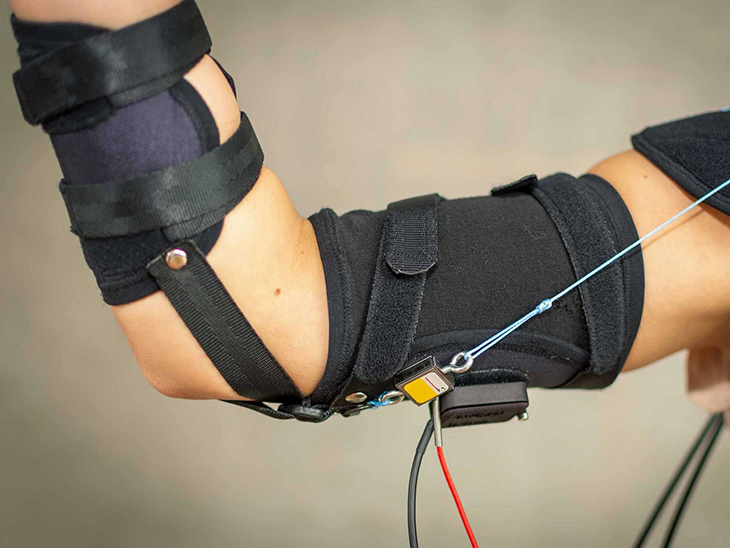This Wearable Muscle Vest Gives Back Mobility To Patients That Have Difficulty Using Their Arms

A company has created a set of “wearable muscles,” and they are meant to allow increased strength and mobility in the arms of people that have lost this capability.
Alongside so many intelligent algorithmic advances, there are also more engineers that are working to design and produce different types of prosthetics to help deal with the loss of mobility, however most are bulky, big, difficult to operate or just too expensive to produce and manufacture.
A perfect example of someone that needs this type of mechanical prosthetic muscle, Michael Hagmann has a rare type of muscular dystrophy known as Bethlem myopathy, which is a disease that affects the skeletal muscles and the connective tissues.
However, thanks to a specialized type of exo-tendon called the “Myoshirt,” his muscular output has now increased by 61%. This Myoshirt has learned which movements Hagmann wants to do before raising and lowering a cable that works just like how a human tendon would, and therefore it learns how to apply the necessary mechanical advantage to his actions.
Former doctoral student at the Swiss Federal Institute for Technology’s Sensory Motor Systems Lab in Zurich, Marie Georgarakis, explains on the ETH Zurich website that “Although hospitals have numerous good therapy devices, they are often very expensive and unwieldy.”
She adds, “And there are few technical aids that patients can use directly in their everyday lives and draw on for assistance in performing exercises at home. We want to close this gap.”
The Myoshirt is described as a soft and wearable exomuscle for the arms and shoulders. It has a vest with cuffs for the upper arms, which also has a small box with that contains all the needed technology to make the vest work and that isn’t used on the body directly.
What the smart algorithms of the vest do is to detect the movements of its user, while the assistance also stays in tune with what the user needs. Meanwhile, the mechanical movements of the vest can be customized to the user’s needs and personal preferences. That way the user can also remain in control of the vest and can also override the device whenever needed and at any time possible.
During the alpha-stage testing of the vest, at least 12 people – which included Hagmann – and another participant with a spinal cord injury, were made to do arm strength tests using the Myoshirt. For the 10 participants that didn’t have mobility problems, Georgarakis and the rest of the research group saw that “onset of muscle fatigue” was ‘delayed by 51 seconds compared to an. Unsupported arm.’
As for Hagmann, his test showed that he experienced a ‘254 second-delay in the onset of fatigue doing unloaded arm lifts,’ while the one with the spinal column injury managed to lift his arms repeatedly for almost 7-and-a-half minutes more without the use of the Myoshirt.
Currently, the vest with the box that has the motor and computer parts already weighs almost 9 pounds, which is why the team is making it their top priority to develop and create a full prototype that has an even more discreet profile. This way, it will allow its users to use it during their day to day life and activities as often as they’d like.
See more about the Myoshirt in the video below:



